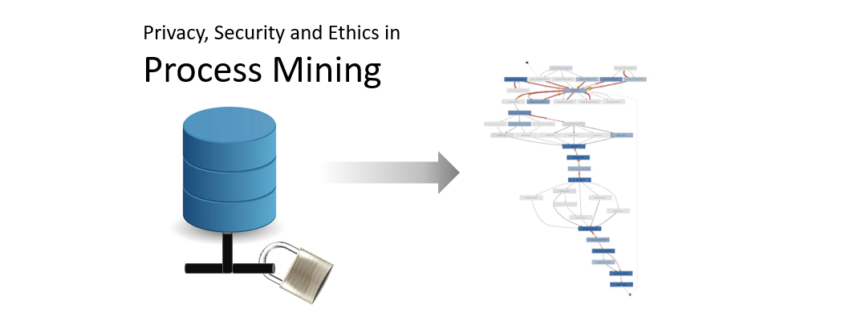Consider Anonymization – Process Mining Rule 3 of 4
This is article no. 3 of the four-part article series Privacy, Security and Ethics in Process Mining.
 Read this article in German:
Read this article in German:
“Datenschutz, Sicherheit und Ethik beim Process Mining – Regel 3 von 4“
If you have sensitive information in your data set, instead of removing it you can also consider the use of anonymization. When you anonymize a set of values, then the actual values (for example, the employee names “Mary Jones”, “Fred Smith”, etc.) will be replaced by another value (for example, “Resource 1”, “Resource 2”, etc.).
If the same original value appears multiple times in the data set, then it will be replaced with the same replacement value (“Mary Jones” will always be replaced by “Resource 1”). This way, anonymization allows you to obfuscate the original data but it preserves the patterns in the data set for your analysis. For example, you will still be able to analyze the workload distribution across all employees without seeing the actual names.
Some process mining tools (Disco and ProM) include anonymization functionality. This means that you can import your data into the process mining tool and select which data fields should be anonymized. For example, you can choose to anonymize just the Case IDs, the resource name, attribute values, or the timestamps. Then you export the anonymized data set and you can distribute it among your team for further analysis.
Do:
- Determine which data fields are sensitive and need to be anonymized (see also the list of common process mining attributes and how they are impacted if anonymized).
- Keep in mind that despite the anonymization certain information may still be identifiable. For example, there may be just one patient having a very rare disease, or the birthday information of your customer combined with their place of birth may narrow down the set of possible people so much that the data is not anonymous anymore.
Don’t:
- Anonymize the data before you have cleaned your data, because after the anonymization the data cleaning may not be possible anymore. For example, imagine that slightly different customer category names are used in different regions but they actually mean the same. You would like to merge these different names in a data cleaning step. However, after you have anonymized the names as “Category 1”, “Category 2”, etc. the data cleaning cannot be done anymore.
- Anonymize fields that do not need to be anonymized. While anonymization can help to preserve patterns in your data, you can easily lose relevant information. For example, if you anonymize the Case ID in your incident management process, then you cannot look up the ticket number of the incident in the service desk system anymore. By establishing a collaborative culture around your process mining initiative (see guideline No. 4) and by working in a responsible, goal-oriented way, you can often work openly with the original data that you have within your team.




 scientists, which will involve more sophisticated analysis, predictive modeling, regressions and Bayesian classification. That stuff at scale doesn’t work well on anyone’s engine right now. If you want to do complex analytics on big data, you have a big problem right now.”
scientists, which will involve more sophisticated analysis, predictive modeling, regressions and Bayesian classification. That stuff at scale doesn’t work well on anyone’s engine right now. If you want to do complex analytics on big data, you have a big problem right now.”